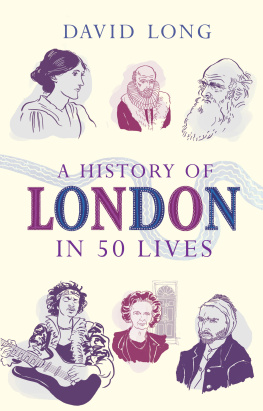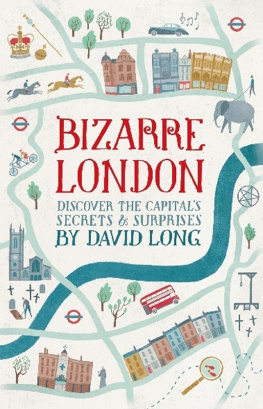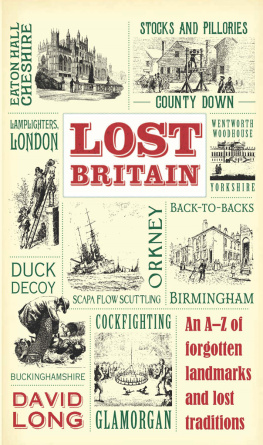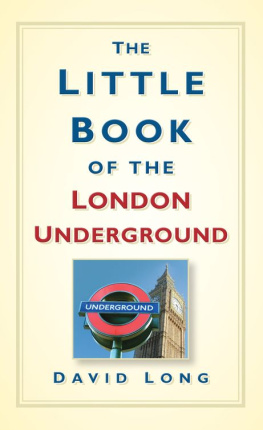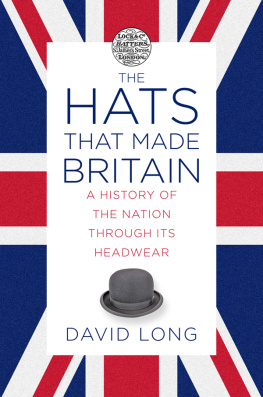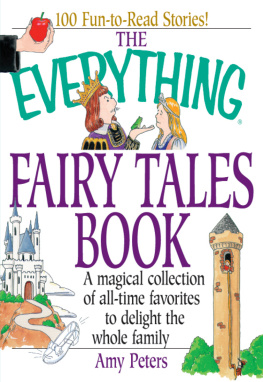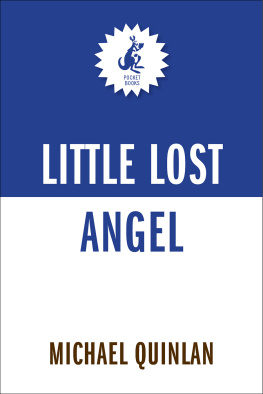David Long - A History of London in 50 Lives
Here you can read online David Long - A History of London in 50 Lives full text of the book (entire story) in english for free. Download pdf and epub, get meaning, cover and reviews about this ebook. year: 2015, publisher: Oneworld Publications, genre: Non-fiction. Description of the work, (preface) as well as reviews are available. Best literature library LitArk.com created for fans of good reading and offers a wide selection of genres:
Romance novel
Science fiction
Adventure
Detective
Science
History
Home and family
Prose
Art
Politics
Computer
Non-fiction
Religion
Business
Children
Humor
Choose a favorite category and find really read worthwhile books. Enjoy immersion in the world of imagination, feel the emotions of the characters or learn something new for yourself, make an fascinating discovery.
- Book:A History of London in 50 Lives
- Author:
- Publisher:Oneworld Publications
- Genre:
- Year:2015
- Rating:5 / 5
- Favourites:Add to favourites
- Your mark:
- 100
- 1
- 2
- 3
- 4
- 5
A History of London in 50 Lives: summary, description and annotation
We offer to read an annotation, description, summary or preface (depends on what the author of the book "A History of London in 50 Lives" wrote himself). If you haven't found the necessary information about the book — write in the comments, we will try to find it.
A History of London in 50 Lives — read online for free the complete book (whole text) full work
Below is the text of the book, divided by pages. System saving the place of the last page read, allows you to conveniently read the book "A History of London in 50 Lives" online for free, without having to search again every time where you left off. Put a bookmark, and you can go to the page where you finished reading at any time.
Font size:
Interval:
Bookmark:

Writer and journalist David Long has regularly appeared in The Times and the London Evening Standard , as well as on TV and radio. He has written many popular and well-received books on London, including Hidden City , Tunnels Towers & Temples and the successful A History of London in 100 Places , which is also published by Oneworld. Find him online at www.davidlong.info.
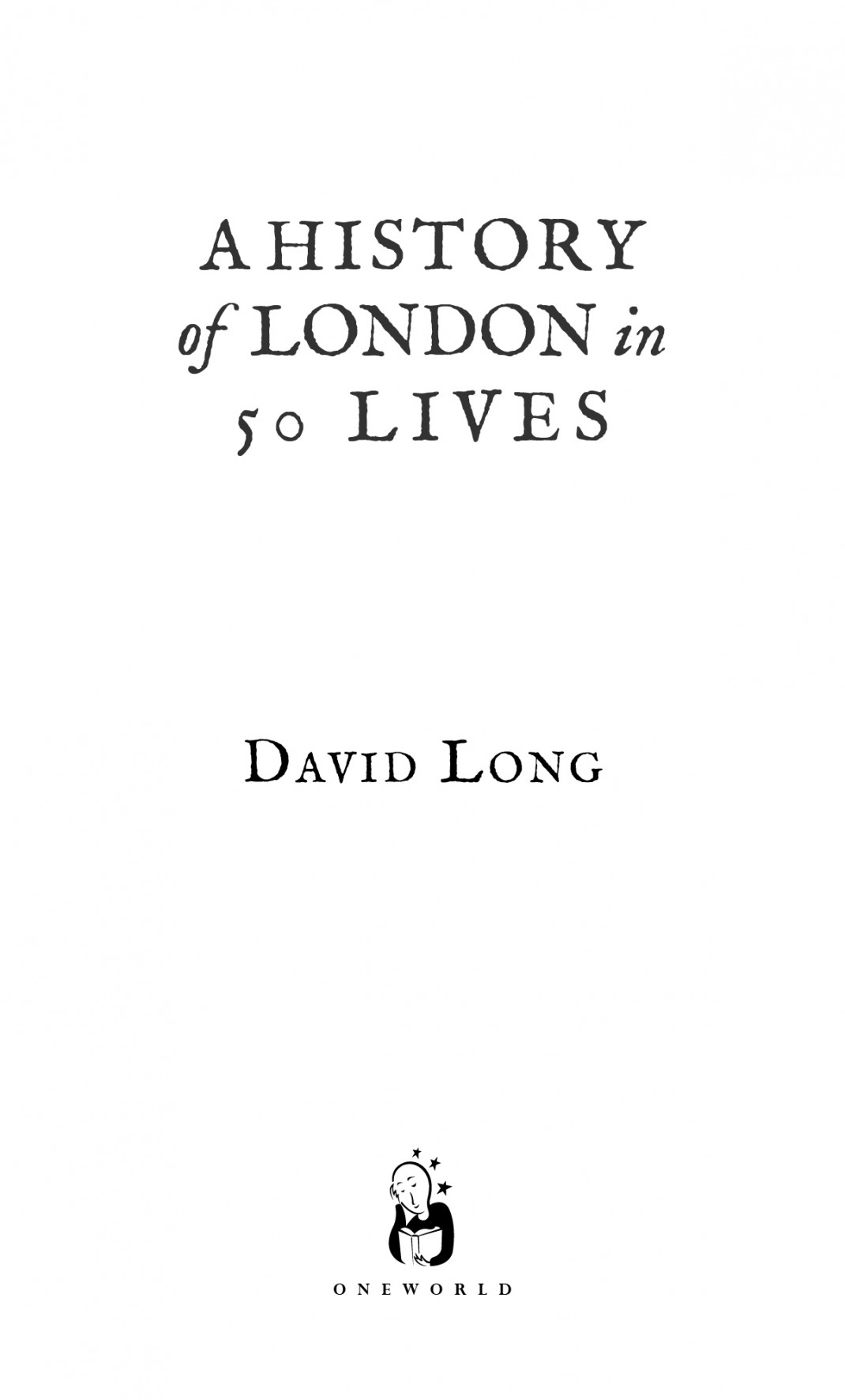
A Oneworld Book
This e-book edition published by Oneworld Publications, 2015
Published in North America, Great Britain
and Australia by Oneworld Publications, 2015
Copyright 2015
The moral right of David Long to be identified as the Author of this work has been asserted by him in accordance with the Copyright, Designs and Patents Act 1988
All rights reserved
Copyright under Berne Convention
A CIP record for this title is available
from the British Library
ISBN 9781780745701
eISBN 9781780745718
Text design, typesetting and eBook by Tetragon, London
Oneworld Publications
10 Bloomsbury Street
London WC1B 3SR
England

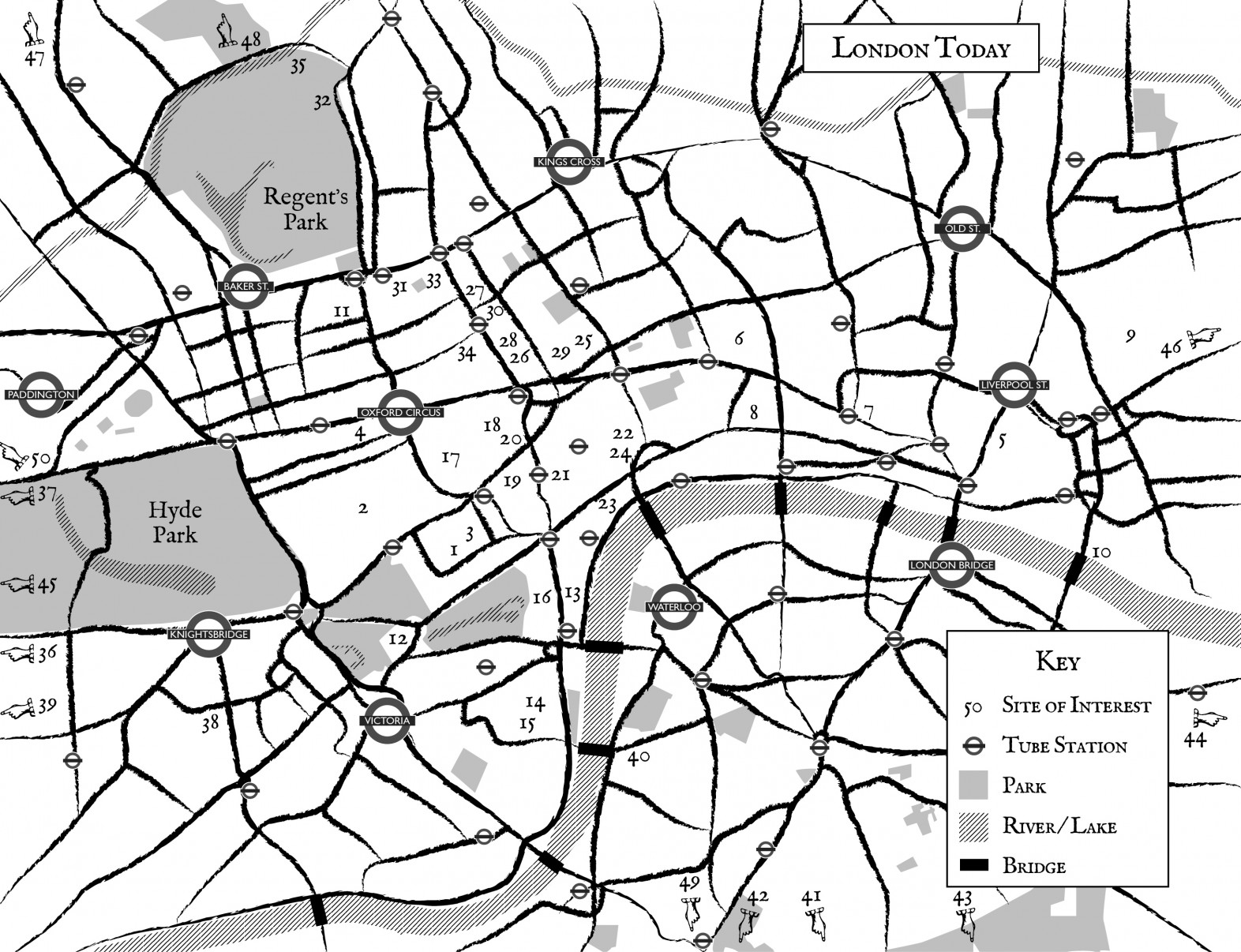
It is not the walls that make the city, but the people who live within them.
George VI
For all the noble churches and superb buildings that James Boswell observed on his arrival in eighteenth-century London, the fact that he noted the variety of perfect and curious characters is a reminder that a city, any city, is nothing without its citizens. And assuming one accepts Disraelis famous description of the heart of the British Empire a hundred years later as somewhere that provided a roost for every bird then London can fairly be said to have been the birthplace or the destination for birds of every feather.
Choosing only a few dozen of them one cannot hope to tell the full story, but that was never the intention behind this book. Nor is A History of London in 50 Lives an attempt to describe only the most illustrious, notorious or obscure Londoners. Instead it comprises a personal selection of some of the more interesting figures from the last few hundred years: heroes and villains; well-known names alongside others who are far less so; men and women who were born in London and helped make it great, or those who came here from elsewhere and were themselves made by their time spent in this truly unique and special city.
Reading the stories of any of these figures it is clear that however you view the place as Disraelis modern Babylon, Arthur Conan Doyles great cesspool, or as it was for Herman Melville somewhere a man could easily disappear King George was right. Londons story is the story of Londoners, born, made or adopted, and always was.
DAVID LONG
www.davidlong.info
The oldest shop in London is that of the hat maker James Lock in St Jamess Street, and the second-oldest the wine merchants a few doors down the hill. Lettering outside Berry Bros. & Rudd proudly states established in XVIIth Century, and inside the panelled premises of the eighth-generation family firm are giant leather-bound ledgers containing the personal details of many distinguished customers including Lord Byron, Beau Brummell, George IV, King Louis-Philippe and Napoleon III.
The idea of a Frenchman buying wine in London (let alone a French king or an emperor) seems extraordinary until one walks around the corner into King Street. There, a nineteenth-century wall plaque the only one in London to include the French imperial eagle confirms that Napoleon III was not simply a customer but also one of the locals.
As Prince Louis Napoleon, Bonapartes nephew and heir, he spent some years living in exile in St Jamess, initially in Carlton House Terrace and then Carlton Gardens before taking on the lease of a new house in King Street in 1847. This was expensively fitted out as a shrine to his uncle, a place to display a large collection of various uniforms and other relics of Bonapartes ill-fated adventures across Europe. London looked on somewhat bemused, but as the young Frenchman seemed to pose no threat he was invited into society, while members of the Army & Navy Club (aka The Rag) on Pall Mall granted him honorary membership.
More surprising, perhaps, as Europe was being rocked by revolution and London was hit by the Chartist riots of 1848, the future emperor enrolled briefly as a special (an unpaid part-time police officer) before resigning and returning to France.
He was elected president of the short-lived Second Republic the same year, and then following a coup dtat in 1851 and the creation of the Second Empire he ruled for nearly twenty years as Napoleon III. As the last Emperor of the French he enjoyed some success domestically, and sensibly proclaimed that LEmpire, cest la paix (the Empire means peace). Unfortunately he was unable to hold to this maxim, and proceeded to fight a great number of wars and on a mammoth scale in the Crimea, Italy, Mexico, against Prussia and even Korea.
The last French monarch was by no means the only one to settle on British soil. The citizen-king Louis Philippe spent fifteen years living in England: briefly resident in Bury St Edmunds, he moved to Surrey where he died in 1850. Before this Louis XVIII had leased Hartwell House in Buckinghamshire from 180914, a place so far beyond his means despite being broke he arrived with a retinue of at least a hundred hangers-on that he was forced to keep a flock of chickens. These he kept on the roof in order to prevent the various impecunious French nobles living in the surrounding cowsheds and pigsties from pinching his eggs.
At one point he considered intervening for the Confederacy in the American Civil War, but inevitably it all proved too much. When the events of the Franco-Prussian War led to Napoleon IIIs ignominious surrender at Sedan in 1870 and at least forty thousand French casualties the humiliation of being captured proved such a disaster nationally and personally that once released he was forced back into exile and fled back to London.
Six months living as a German captive had left Napoleon a bitter, broken man, and for the remainder of his life spent in England, with his wife Eugenie and his son he was haunted by such regrets and memories of defeat that his last words (whispered to a doctor called to his deathbed) were Etiez-vous Sedan? were you at Sedan?
By this time the family, still very much insisting on the privileges of an imperial family, were settled at Camden Place in what is now Chislehurst, a suburb of Bromley. Napoleon was finished with society, and society was clearly finished with him, and two years after his return Napoleon III was laid to rest at the Catholic church of St Marys, Chislehurst.
There is a strange footnote to the story. His widow, refusing to relinquish her husbands imperial ambitions and hit hard by their sons death (while fighting for the British in the Zulu Wars) decided to found a monastery at Farnborough in Hampshire. Intended for monks driven out of France by the anti-clerical edicts of the Third Republic, the plans included an imperial crypt to which the bodies of her husband and the so-called Prince Imperial were brought in 1888. Their tombs, and her own, can still be seen on public days, the monks staunchly defending recent moves from France to have all three bodies repatriated nearly a century and a half after they were sent into exile.
Font size:
Interval:
Bookmark:
Similar books «A History of London in 50 Lives»
Look at similar books to A History of London in 50 Lives. We have selected literature similar in name and meaning in the hope of providing readers with more options to find new, interesting, not yet read works.
Discussion, reviews of the book A History of London in 50 Lives and just readers' own opinions. Leave your comments, write what you think about the work, its meaning or the main characters. Specify what exactly you liked and what you didn't like, and why you think so.

